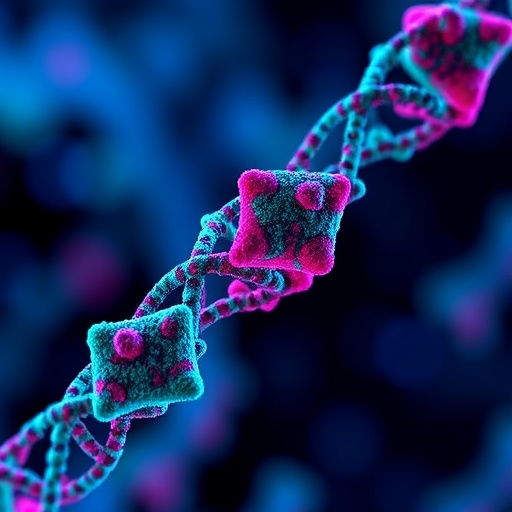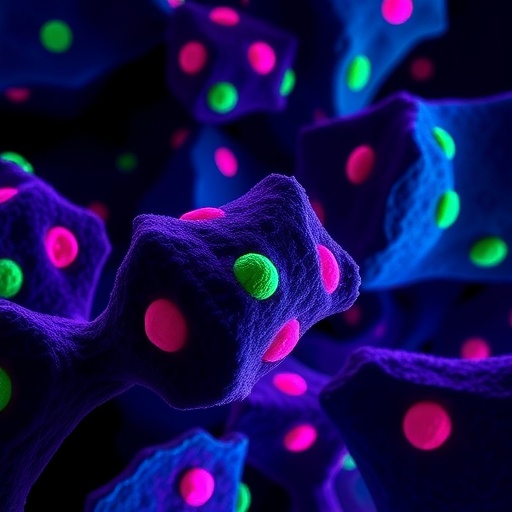
Glioblastoma, the most aggressive and lethal form of malignant brain tumor, remains a formidable challenge in oncology. Despite advances in surgery, radiation, and chemotherapy, most patients diagnosed with glioblastoma survive only one to two years post-diagnosis. The relentless nature of this cancer stems from its highly invasive behavior and remarkable ability to evade conventional therapies, underscoring the urgent need for novel treatment strategies grounded in a deeper understanding of its biology.
At the heart of recent breakthroughs is a nuanced exploration of the tumor’s metabolism, particularly how glioblastomas process glucose, a primary fuel source for cells. Unlike healthy brain cells that metabolize glucose primarily to generate the energy and neurotransmitters needed for normal brain function, glioblastoma cells rewire their glucose utilization to fuel rapid growth and tissue invasion. This metabolic reprogramming diverts glucose away from traditional energy pathways toward the production of nucleotides and other macromolecules essential for DNA replication and cellular proliferation.
These insights emerged from a collaborative study by researchers at the University of Michigan, integrating expertise from the Rogel Cancer Center, the Department of Neurosurgery, and the Department of Biomedical Engineering. The team employed sophisticated labeling techniques, injecting isotopically marked glucose into both mouse models and human patients with brain tumors. This approach allowed them to trace glucose’s metabolic fate within living organisms, revealing distinct usage patterns between normal and cancerous brain tissues.
Healthy neurons take up glucose and channel it through glycolysis and the tricarboxylic acid cycle to produce ATP, the energy currency necessary for neuronal activity, and to support the synthesis of neurotransmitters. In stark contrast, glioblastoma cells suppress these pathways and instead reroute glucose towards the one-carbon metabolism pathway and nucleotide biosynthesis. This shift supports the nucleic acid synthesis required for the aggressive proliferation characteristic of these tumors. The finding illustrates a “metabolic fork in the road,” a critical juncture where glucose utilization diverges, dictating cell fate and function.
An additional layer of complexity emerged when researchers observed that while healthy brain cells synthesize amino acids like serine internally from glucose-derived intermediates, glioblastoma cells downregulate this pathway. Rather than producing their own serine and glycine, the tumor cells rely heavily on scavenging these amino acids from the bloodstream. This metabolic dependency presents a therapeutic vulnerability that the team aimed to exploit.
Building on this knowledge, the investigators designed dietary interventions in mouse models, restricting dietary serine and glycine intake to reduce their availability in the blood. Remarkably, this amino acid restriction enhanced the efficacy of radiation and chemotherapy, resulting in smaller tumors and prolonged survival compared to controls. These findings suggest that manipulating systemic nutrient availability can selectively impair tumor metabolism without harming normal brain function, an innovative concept in cancer therapy.
To quantify and extend these findings, the researchers constructed mathematical models simulating glucose metabolism pathways in the brain. By conceptualizing metabolic fluxes as roads and nutrient pathways as traffic routes, they equated drug targets to roadblocks that could strategically impede cancer’s metabolic highways. Drugs that block key nutrient uptake pathways on heavily trafficked metabolic “freeways” promise far greater therapeutic impact than those targeting less prominent routes used primarily by normal tissues.
This multidisciplinary effort, combining clinical neurosurgery with molecular biology and bioengineering, exemplifies a modern approach to tackling cancer’s complexity. By studying actual human tumors alongside animal models and computational simulations, the team has paved the way for translating metabolic insights into clinical trials. They are currently preparing to evaluate whether specialized diets limiting serine and glycine can replicate the benefits observed in mice for human glioblastoma patients.
The implications of this research extend beyond glioblastoma. Tumor metabolism is increasingly recognized as a hallmark of cancer, and understanding its unique rewiring provides a rich landscape for therapeutic innovation. Targeting metabolic pathways could complement existing treatments, potentially overcoming resistance mechanisms that plague current standard-of-care approaches. This paradigm shift from solely targeting genomic alterations to exploiting metabolic dependencies heralds a promising avenue in precision oncology.
Moreover, this study underscores the importance of conducting metabolic research directly in patients rather than relying solely on in vitro or animal models. The metabolic environment within the human brain is distinct and complex, and only by following glucose metabolism in patients were the researchers able to confirm key pathways operative in human tumors. This patient-centered methodology not only enhances the translational relevance but also opens opportunities for personalized treatment strategies based on metabolic profiling.
Future research will need to elucidate whether other nutrient dependencies exist in glioblastoma and whether combinatorial treatments targeting multiple metabolic pathways yield synergistic effects. Furthermore, clinical trials must carefully balance dietary interventions to avoid malnutrition or adverse effects while maximizing tumor suppression. Nevertheless, the prospect of exploiting metabolic vulnerabilities through diet underscores the ingenuity and adaptability of modern cancer research.
In conclusion, the University of Michigan study reveals a fundamental shift in how glioblastoma cells metabolize glucose, diverting it from energy production toward biosynthesis of key macromolecules necessary for tumor growth and invasion. By leveraging the tumor’s reliance on blood-derived amino acids, particularly serine and glycine, researchers have identified a novel, non-genotoxic strategy to improve treatment response in preclinical models. These findings lay the foundation for new metabolic therapies that could transform clinical outcomes for patients battling this devastating disease.
Subject of Research: Animals
Article Title: Rewiring of cortical glucose metabolism fuels human brain cancer growth
Web References:
https://www.nature.com/articles/s41586-025-09460-7
References:
“Rewiring of cortical glucose metabolism fuels human brain cancer growth,” Nature. DOI: 10.1038/s41586-025-09460-7
Image Credits:
Justine Ross, Michigan Medicine
Keywords:
Health and medicine
Tags: brain tumor treatment strategiescollaboration in cancer researchdietary changes for brain cancerglioblastoma metabolic reprogrammingglioblastoma survival rates and treatmentsglucose utilization in cancer cellsmetabolic pathways in glioblastomanovel therapies for glioblastomaoncology and dietary interventionsresearch on brain cancer therapiestherapeutic diet for malignant tumorstumor metabolism and therapy resistance





